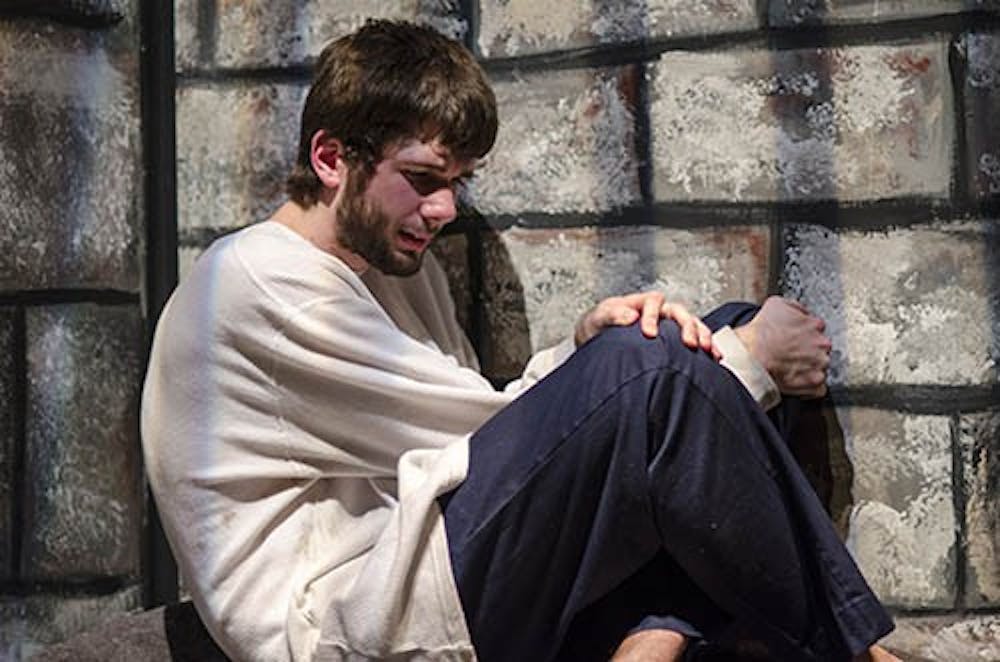The Cave Theatre is divided. A damp stone-wall of paint and plywood will separate the stage as well as the audience.
“The Unseen,” by Craig Wright, is the story of two prisoners, Valdez and Wallace, who have been imprisoned for 10 years at the story’s onset. Their only interaction with one another is the muffled speech and sporadic pounding on the wall between their adjacent cells.
This property of their relationship is reflected in the seating and set design, with half of the audience only able to see Valdez, and half only able to see Wallace.
“It’s a new twist to theatre,” said director Jordan Bennett-Barnes, a junior telecommunications and theatre studies major. “It puts you in the play, because you feel like you’re in the cell with the prisoner.”
The size and shape of The Cave makes the set-up possible. Seating is done with moveable chairs and, occasionally, risers. Because there isn’t a physical stage and the set isn’t restricted to a certain view.
The story revolves around the dynamics of polar opposite characters. Valdez is somewhat simple, yet optimistic. Wallace is brutally intelligent and unwilling to believe in anything he cannot see or calculate. The characters’ differences reflect the lenses through which the audience experiences the play.
Those sitting on Valdez’s side experience Wallace in the same way Valdez does — as an invisible voice and a fist through the stone. They are unable to view Wallace’s expressions or sometimes physical actions, leading to an enhanced sense of empathy with the man on their side of the wall.
The partitioned environment presents challenges to the actors.
“When I learned acting, my acting instructor always told me that half of acting is reacting,” said Nick Murhling, a freshman theatre studies major who plays Valdez, “So you kind of have to redefine how you react to a person and them not seeing you changes everything.”
David Merten, a freshman acting major playing Wallace, mirrored the challenges. He said since the actors cannot play off one another’s actions, and because there are pauses between dialogue, he and Murhling must be aware of the pace of the play to know when to deliver their lines.
He also said that acting styles had to be tailored to emphasize and react to inflection and tone of voice without abandoning the physical aspects.
“It’s difficult, but it’s extremely rewarding,” Merten said.
The third and final character, the prison guard and torturer Smash, walks between their cells and is the only character both sides of the theater see. Justin Pierce, a sophomore theatre studies major who portrays Smash, said the split audience is challenging when trying to address both sides.
Because Cave Theatre can be set up in whatever way the cast chooses, “The Unseen” gives its audience the chance experience a story in a way that would not be possible on a mainstage.
“It’s going to make you think about what if you were in this situation,” Pierce said. “There’s two very different types of people reacting to this situation. You want to see what kind of person you would be.”


